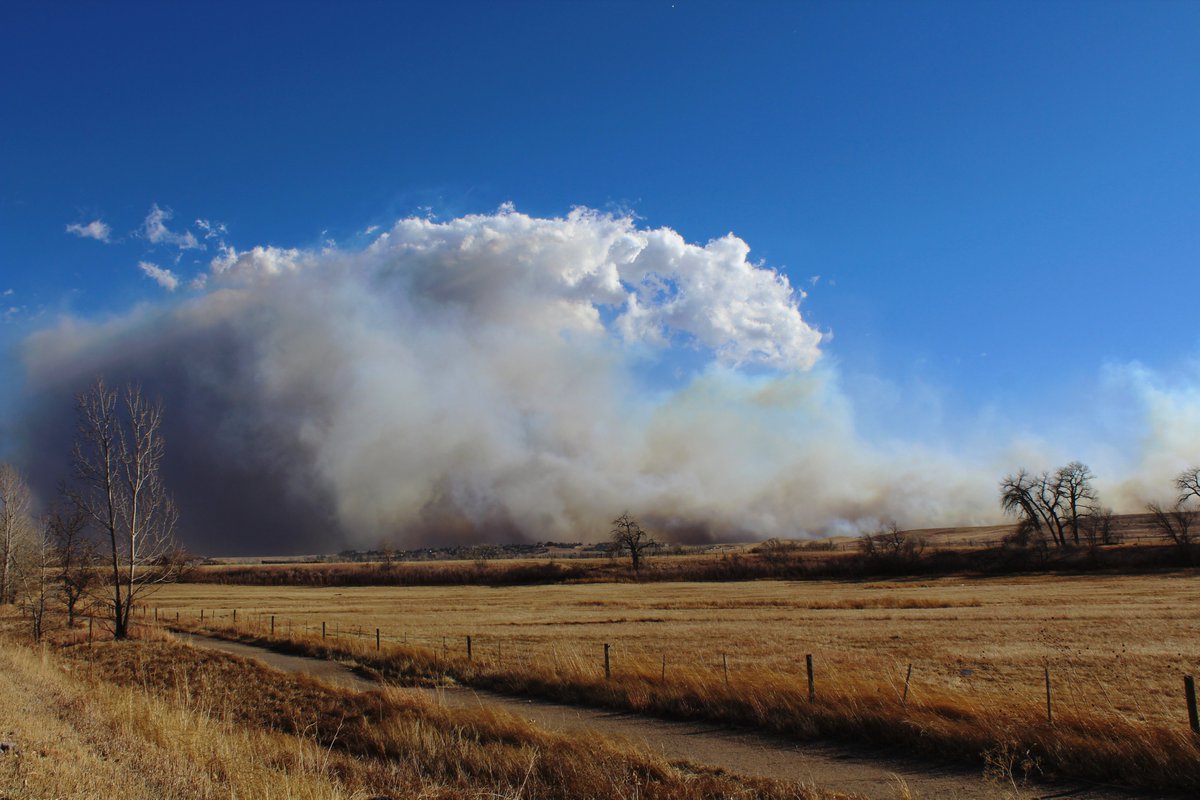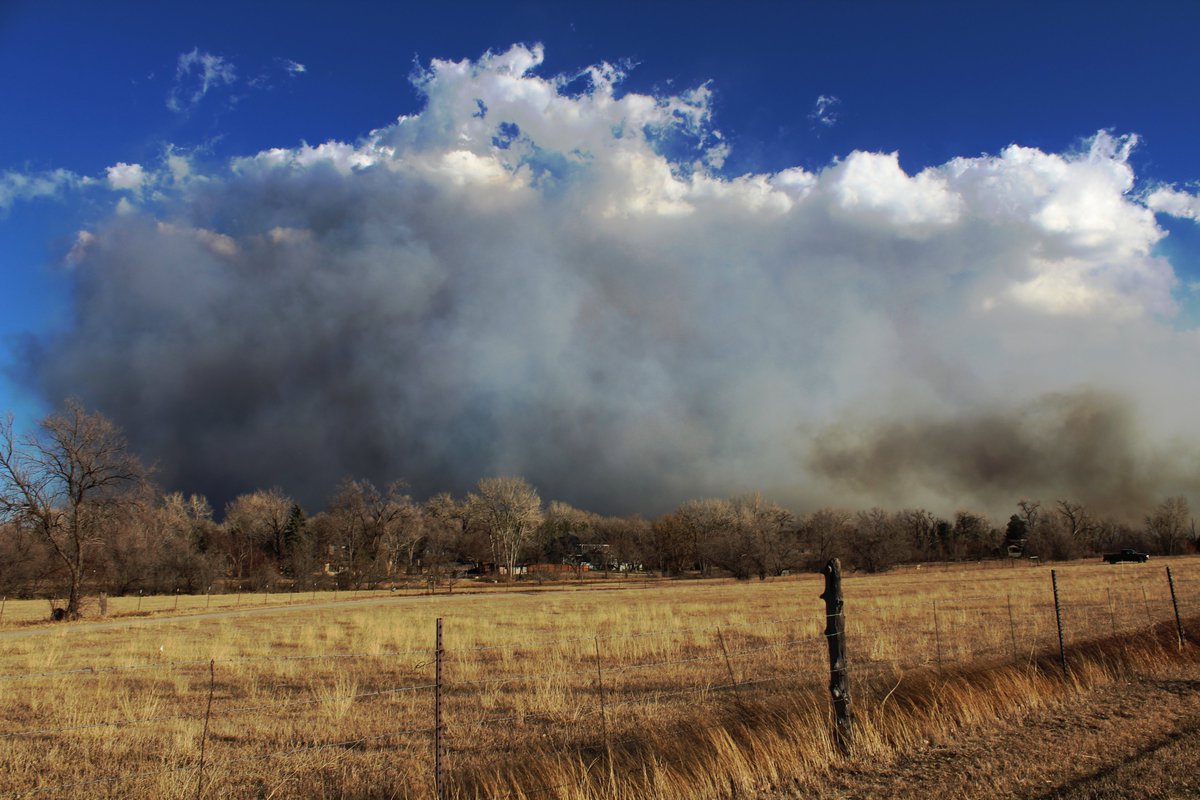
Now that activity on the #NCARFire in Boulder, CO has calmed down significantly, a majority of the evacuation orders have been lifted, and the risk of property loss moving forward appears low, I wanted to share a few related thoughts. (All photos from yesterday, 3/26/22.) #COwx 

1) NCAR Fire is an example of a relatively small fire posing disproportionately high risk to homes in wildland-urban interface. Should an ignition have occurred exactly the same place during one of Boulder's infamous downslope windstorms, it could have been a catastrophic event. 

2) Emergency comms during this event were...not good. There was little info during first 1.5 hrs, which would have been critical had conditions been worse. Then, suddenly, a startlingly wide evacuation was ordered for ~15-20k people well *upwind* of fire,causing traffic gridlock.
3a) With this & other recent fires, there has been some handwaving regarding supposed non-influence of climate change. Obviously, climate change is never singular cause of *any* fire. But making an accurate assessment requires deeper consideration of underlying factors... 

3b) Here, it's true that Jan-Mar period was very wet in portions of the Front Range. But it's also true that conditions yesterday were record/near record warm (prior to spring green-up),& the region experienced an all-time record warm/dry period from last summer into autumn.#COwx 





3c) The prolonged, multi-month period of record high aridity & evaporative demand last year caused 1,000 and 10,000 hour fuels (i.e., dense dead/down vegetation w/large diameters that respond slowly to climate conditions on timescales of ~1-10 months) to become exceptionally dry.
3d) Grass is a 1-10 hr fuel, meaning that is responds quickly to ambient conditions (like record warm/very dry & windy conditions yesterday). But 1-10k hr fuels, plus living but severely drought-stressed trees, were all burning in NCAR Fire, in addition to grass.
3e) To summarize point 3: this is not a formal analysis of potential links between climate change & this specific fire. But I do want to illustrate how important to think critically about these links between climate & wildfire--it's not just about weather the day of the event.
4) Finally, a silver lining! Assuming that current reports are correct (no homes lost/no injuries as a result of NCAR Fire), it may ultimately serve as an unplanned "prescribed burn" that could help improve ecosystem health & protect parts of South Boulder during future fires. 

(P.S.) I authored a perspective piece in @outsidemagazine on broader context of the (much more devastating) Marshall Fire--which also hit close to home just <3 months ago. Circumstances were somewhat different, but much of the discussion remains relevant. outsideonline.com/outdoor-advent…
(P.P.S.) One additional thing that I forgot to mention is elevated potential for post-fire flash flood/debris flows that might arise in both Marshall Fire & NCAR fire footprints (esp. South Boulder Creek and Bear Creek watersheds) during upcoming spring/summer flash flood season.
• • •
Missing some Tweet in this thread? You can try to
force a refresh
















